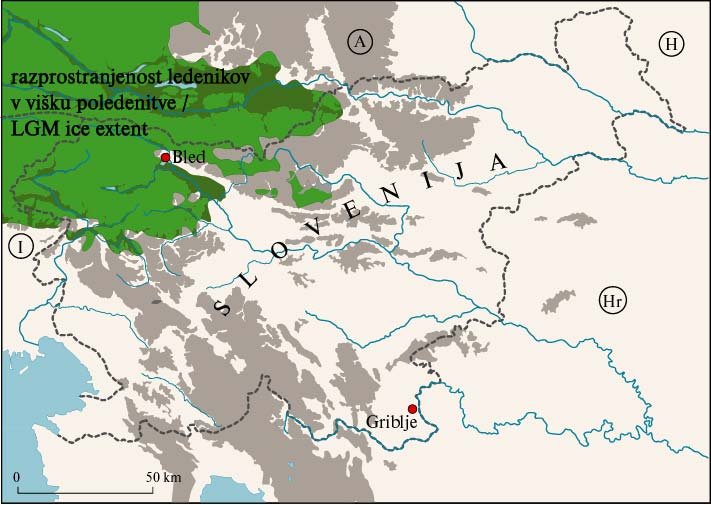 Institute of Archaeology Institute of Archaeology |
[Slovenian] |
| Home | Members | Programme | Projects | Laboratory |
| Database | Publications | Library | Links | Archive |
|
FRAGMENTS OF ICE AGE ENVIRONMENTS Lateglacial vegetation at Lake Bled and Griblje marsh (Slovenia): Maja ANDRIČ
Abstract The results of pollen analysis suggest that at the beginning of the Lateglacial interstadial (14300 cal. BP) an open woodland (Pinus, Betula) was growing at both study sites, but an increase of mesophilous deciduous trees (Quercus, Tilia, Ulmus), Betula and Picea at ca. 13800 cal. BP indicated further climatic warming, and the differences between study sites became apparent. Whereas in warmer southestern Slovenia (Griblje) Tilia and Betula were more abundant, pollen influx for these two taxa was much lower at Lake Bled, which was located in colder northwestern Slovenia in glaciated landscape and mountains. At both study sites a decline of tree taxa and an increase of herbs (Poaceae, Chenopodiaceae and Artemisia) suggest colder and drier conditions in the Younger Dryas. Keywords: palynology, Lateglacial, lime (Tilia), Slovenia, Lake Bled, Griblje *** 2011, (Opera Instituti Archaeologici Sloveniae, 21), 280 pages, 44 b-w photographs, 10 drawings, 52 tables, 71 graphs and 9 maps, 20 x 29 cm hardcover, ISBN 978-961-254-257-3. |
